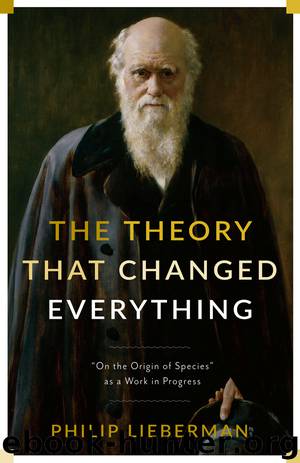The Theory That Changed Everything by Philip Lieberman

Author:Philip Lieberman
Language: eng
Format: epub
Publisher: Columbia University Press
NEURAL CIRCUITS
A discussion on how brains work first entails showing that the traditional theory, proposed in the early years of the nineteenth century, is wrong. Coming of Age in Samoa, Margaret Mead’s account of life there, was controversial from the day of its publication in 1928. When she spoke in 1973 at the International Congress of Anthropological and Ethnological Sciences, her depiction of sexual mores in Samoa was still being disputed. But what I recall didn’t have anything to do with sex. On the stage in Chicago, Mead was bantering with Sol Tax, one of the congress’s organizers. At age seventy-two, she still had an irreverent attitude toward received wisdom and declared that the assembled scholars, like most people, usually follow the “fumba.” We continue to believe what our ancestors believed.
The fumba that continues to pervade neurophysiology dates back to Franz Joseph Gall, who in 1796 claimed that the human brain contained twenty-seven “organs,” each determining an aspect of personality, such as piety, or of cognitive capacity, such as language. These “faculties” could be located by a skilled phrenologist by examining a person’s skull, locating bumps and depressions and taking measurements. The underlying premise of phrenology is still with us, though under another name, in studies that claim that independent neural “modules”—self-contained neural systems—each confer some aspect of behavior, such as language or artistic ability or personality. The sites of the hypothetical neural centers that trigger fear or pleasure or that confer complex aspects of behavior such as language no longer are located by examining bumps on the surface of a person’s skull. However, current neophrenological studies presented in books published by university presses and papers published in scholarly journals claim that the human brain is an assemblage of discrete neural structures, each conferring an aspect of cognition or language or specific aspect of behavior such as fear, pleasure, empathy, or moral conduct. Phrenology was a key feature of Vestiges of the Natural History of Creation. Vestiges, a jumble of phrenology and intelligent design published anonymously in 1844, was attacked by the clergy because it deviated from the story in Genesis. It was also attacked by the leading scientists of the day for its errors and absence of supporting data. Vestiges convinced Charles Darwin to delay publication of his evolutionary theory until he had an airtight case. Darwin published On the Origin of Species only when he received a letter from Alfred Wallace that sketched out a theory of evolution similar to the one that Darwin had working on for more than twenty years.
Robert Chambers, the anonymous author of Vestiges of the Natural History of Creation, was a member of the Edinburgh Phrenological Society, founded in the 1820s by George Combe, one of the leading phrenologists of the day. Combe was an international celebrity. When John Audubon visited Edinburgh to promote his paintings of birds, one of his priorities was to be examined by Combe. After measuring Audubon’s skull and moving his fingers along it to ascertain the locations and
Download
This site does not store any files on its server. We only index and link to content provided by other sites. Please contact the content providers to delete copyright contents if any and email us, we'll remove relevant links or contents immediately.
Sapiens: A Brief History of Humankind by Yuval Noah Harari(14216)
Sapiens by Yuval Noah Harari(5281)
Pale Blue Dot by Carl Sagan(4886)
Homo Deus: A Brief History of Tomorrow by Yuval Noah Harari(4801)
Livewired by David Eagleman(3663)
Origin Story: A Big History of Everything by David Christian(3632)
Brief Answers to the Big Questions by Stephen Hawking(3358)
Inferior by Angela Saini(3260)
Origin Story by David Christian(3133)
Signature in the Cell: DNA and the Evidence for Intelligent Design by Stephen C. Meyer(3055)
The Gene: An Intimate History by Siddhartha Mukherjee(3029)
The Evolution of Beauty by Richard O. Prum(2925)
Aliens by Jim Al-Khalili(2776)
How The Mind Works by Steven Pinker(2714)
A Short History of Nearly Everything by Bryson Bill(2616)
Sex at Dawn: The Prehistoric Origins of Modern Sexuality by Ryan Christopher(2472)
From Bacteria to Bach and Back by Daniel C. Dennett(2432)
Endless Forms Most Beautiful by Sean B. Carroll(2415)
Who We Are and How We Got Here by David Reich(2385)
